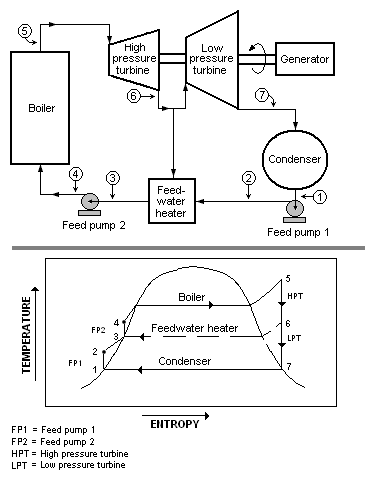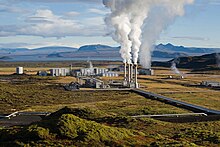Steam–electric power station
The waste heat from a gas turbine can be used to raise steam, in a combined cycle plant that improves overall efficiency.
Reciprocating steam engines have been used for mechanical power sources since the 18th Century, with notable improvements being made by James Watt.
As generator sizes increased, eventually turbines took over due to higher efficiency and lower cost of construction.
An important class of steam power plants is associated with desalination facilities, which are typically found in desert countries with large supplies of natural gas.
However, poor heat transfer properties and the obvious hazard of toxicity have ruled out mercury as a working fluid.
Plants operating in hot climates may have to reduce output if their source of condenser cooling water becomes warmer; unfortunately this usually coincides with periods of high electrical demand for air conditioning.
A large river or lake can also be used as a heat sink for cooling the condensers; temperature rises in naturally occurring waters may have undesirable ecological effects, but may also incidentally improve yields of fish in some circumstances.
[5][6] Preheating the feedwater reduces the irreversibilities involved in steam generation and therefore improves the thermodynamic efficiency of the system.
[9] This reduces plant operating costs and also helps to avoid thermal shock to the boiler metal when the feedwater is introduced back into the steam cycle.
Once this water is inside the boiler or steam generator, the process of adding the latent heat of vaporization begins.
Some of it is turned into steam due to the heat being generated by the burners located on the front and rear waterwalls (typically).



